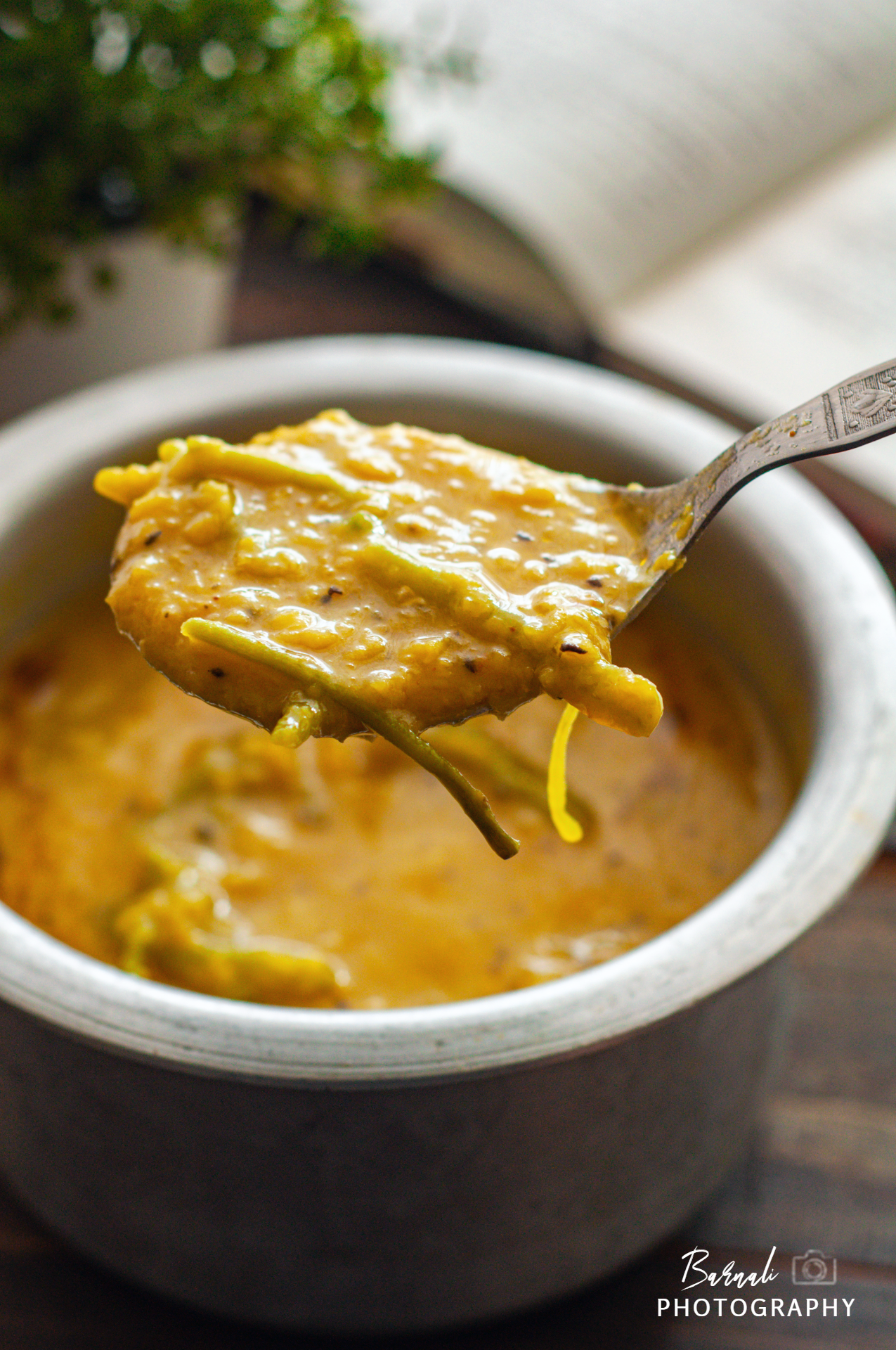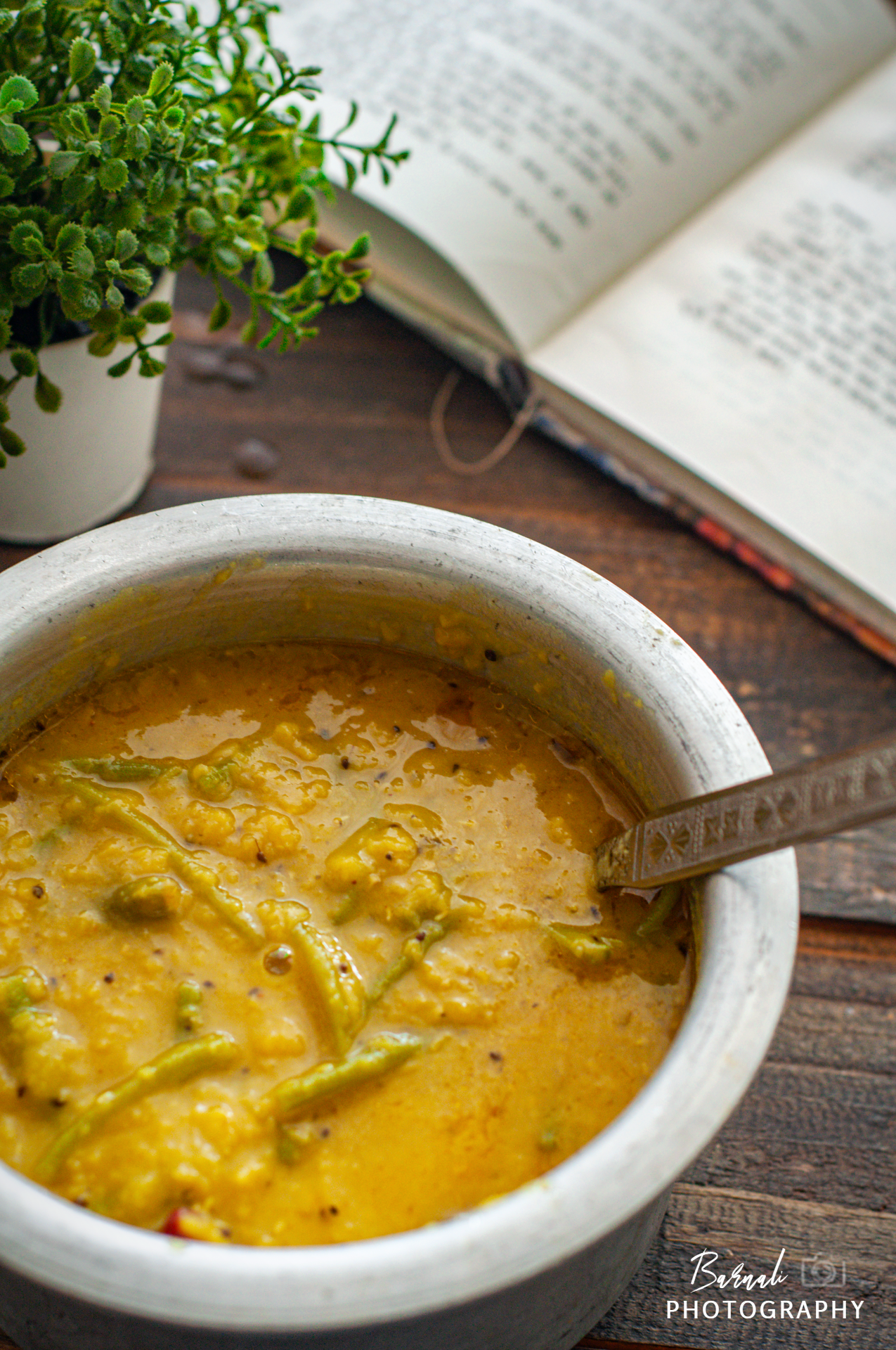This recipe is part of 'Best of Waste' series. As earlier you might have seen other recipes on my blog which were made using vegetable parts which are often discarded in our house holds. I will give a link of them towards the end of the blog. Converting the vegetable waste into a unique dish is very satisfying for the soul. It makes you feel like a culinary inventor if the dish ends up being awesome.
In this recipe I have used the stems of the red saag which is known as Lal Shaak in Bengal and Red Amaranth in Maharashtra. The leaves are usually used to make a dry subzi and the stems are discarded here in Pune. In Bengal however the thick stems of this Red saag is used for making dals and data chorchori. Thick stems have more flesh in them which makes it enjoyable to chew them. In today's recipe I have used the tender stems of the saag which my maid discarded after cleaning the saag. My maid at times questions my sanity when she sees me cooking with all these waste items. But when the final dish tastes and looks stellar she has to eventually agree that all these wastes pack a punch and can be actually made into nutritious and delicious recipes.
Since tender stems are used, I made sure to take off any hard skin from the stems. Its very easy to remove them. Just cut the stems halfway through, you will see threadlike skins coming out, then pull the cut stems down which will also pull out teh threadlike skin with it. Keep repeating until you have all the hard skin peeled off. This is also needed as Lal saag stems tend to be a little hard and they don't soak up the seasoning from the dal. Removing the skin helps them absorb all the seasoning.
Now you might be wondering, the title says Red Saag Stems so why are the stems in the picture looking green? There is a scientific justification to this. Red vegetables lose their color when cooked because the pigments that cause the color, called anthocyanins, dissolve in water and leach into the cooking water causing color fading. Same is the case here, the color leached into the water in which it was boiled and the stems became green! Another surprising thing was, I did add the red color water into the dal when I boiled it but that did not make the dal red. Which means unlike Beetroot whose color is more pigmented and makes everything red, the Amamranth doesn't impart such a pigmented after effect. You can also make the same recipe with green Amaranth stems as well. The recipe is very earthy and pairs well with steamed rice and any vegetable on the side - perfect for hot summer afternoons.
Preparation Time : 15 minutes
Cooking Time : 20 minutes
Serves - 4 adults
Ingredients :
- Masoor Dal - 250 gm
- Amaranth Leaves Stem - 50 to 100 gm
- Radhuni / Celery Seeds - 1 tsp
- Green Chili - 2 (Slitted)
- Red Dry Chili - 2 ( broken)
- Bay Leaf - 2
- Turmeric - 1/2 tsp
- Mustard Oil - 2 tbsp
- Water - As needed ( 2 cups or more as per consistency)
- Salt - To Taste
Procedure :
1. Wash and rinse the masoor dal until all impurities are gone. Let it soak for about 30-40 minutes in some water. This will help in easily cooking the dal.
2. Meanwhile prep the stems. Cut the stems halfway through, you will see threadlike skins coming out, then pull the cut stems down which will also pull out the threadlike skin with it. Keep repeating until you have all the hard skin peeled off. This is also needed as Lal saag stems tend to be a little hard and they don't soak up the seasoning from the dal. Removing the skin helps them absorb all the seasoning. Cut all the stems into 2 inch pieces. Now wash the stems and keep it aside.
3. Now take a pressure cooker and put the washed stems inside. Add about 2-3 cups of water and 1/4th tsp of salt. Close the lid and cook it for a couple of whistles. Then immediately open the lid by placing the closed pressure cooker under running water and helping in the pressure inside to subside. Take out the boiled stems and keep the water ( red color) aside.
Tip: The key to making dals with vegetables is to have the vegetable stock cook with the dal. But if you boil the dal and the soft veggies together, the vegetables might disintegrate. So the tip is to cook them separately one by one. First the veggies, then use the veggie stock to cook the dal so that all the nutrients and taste remains in the dal as well.
4. Now take the soaked dal and add the red water from the steams boiled in Step 3. Top up with more water if needed, we only need to keep the water level as much in the pressure cooker to just submerge the dal. This ensures when the whistles start coming excess water is not flowing out. Cook for a couple of whistles, and then let the pressure cooker stand till the pressure inside dies down naturally.
5. Now open the pressure cooker lid and while the dal is still hot, using a ladle give everything a nice whisk for a couple of minutes so as to break down the dal into a uniform thick texture. Note that this makes the dal more tasty.
6. Now take a kadai and heat mustard oil. Once the pungent smell of mustard oil is gone and the oil is smoking temper it with bay leaves, radhuni and dry red chilies. Sauté it for a few seconds till you get the aroma of the spices. Now add the boiled stems from step 3. Sauté it for a few more minutes. Now add the whisked dal and fold in. Add salt, turmeric and slitted green chilies. mix everything well and cover the kadai.
Tip : In case you dont have radhuni handy, you can replace it with Kalo Jire or kalonji or even the regular cumin.
7. Let it cook for about 3-4 minutes or until the dal comes to a rolling boil. Now drizzle some mustard oil on top and switch off the flame. Let is sit covered for the aroma of the mustard oil to incorporate with the dal.
Serve it with steamed rice and a choice of vegetables in the side.
Other 'Best of Waste Recipes':









No comments:
Post a Comment